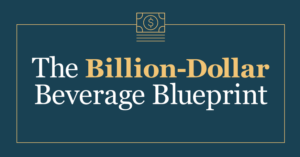How to Calculate Burn Rate for Startups
Propeller Industries
March 1, 2023
Business owners don’t always focus on short-term profitability when a company enters its initial startup phase. Instead, they tend to direct their efforts toward building a customer base and optimizing their product or service.
If the startup is pre-revenue and has raised capital, it will often operate at a loss—which can be a sustainable posture—dictated by its growth strategy. A startup’s burn rate calculations need to be spotless to succeed. Owners need to know exactly how much money they’ll lose over a period of time before they drive profitability.
But what’s the burn rate formula? And how do you ensure it’s down-to-the-dollar accurate?
Read on to learn how to calculate burn rate for startups and the importance of the formula you employ.
What Is a Burn Rate Calculation?
Burn rate is a metric that illustrates how much money your startup is spending and how quickly it “burns” through its working capital.
In other words, it’s the amount of money a business needs to have on hand over a specific window of time to pay for overhead expenses and liabilities. According to The Balance:
“The burn rate is commonly expressed in terms of months, but it doesn’t need to be. When a company is experiencing a cash crisis, that company may need to calculate a weekly burn rate—or even a daily burn rate—to see how long it has to turn its financial situation around. On the other hand, a financially stable company may only need to calculate a quarterly or annual burn rate.”
This forecast enables a business to establish realistic goals, strategies, and timelines. Seeing as eighty-two percent of startups fail due to cash flow disruptions and twenty-nine percent fail from running out of capital, understanding the burn rate formula intuitively is a critical component of your startup’s sustainability.
With an accurate burn rate projection, you will know how long you can remain operational before running out of money. This window is typically referred to as your company’s “cash runway.”
Reaching the end of the runway without hitting revenue targets or usage KPIs (key performance indicators) can be disastrous for startups, as raising more capital due to cash loss is not an easy endeavor.
The Burn Rate Formula
For startups, there are two flagship “types” of burn rates. Estimating your capital obligations typically depends on your startup’s business model, industry, and growth strategies.
1. Gross Burn Rate
Gross burn rate is the total operating costs your company incurs each month, also known as its “operating expenses.” You can calculate this rate by summing up your company’s total cash outflows each month.
Gross Burn Rate = Monthly Operating Expenses
Gross burn allows your company to:
- Calculate its efficiency
- Identify primary cost drivers
- Understand exactly how much cash you’re spending each month
2. Net Burn Rate
The net burn is the rate at which your company loses its capital and how much cash you require to keep operating over a specific period. You can calculate this rate by subtracting cash on hand from the gross burn rate.
Net Burn Rate = Monthly Operating Losses
Net burn allows your company to:
- Accurately predict its cash runway
- Set a responsible strategic growth plans
Applying the Burn Rate Formula
For instance, let’s review a fictional SaaS company. SaaSy Coders Inc. is:
- Spending $20,000 per month
- Making $15,000 per month
- Has $100,000 in cash on hand
In this case, SaaSy Coders’ gross burn rate would be $20,000 per month, and their net burn rate would be $5,000 per month ($15k revenue – $20k operating expenses). So, with $100,000 in the bank, SaaSy Coders would have 20 months of runway before the business ran out of cash —if operations and expenses remained static.
Two Key Burn Rate Variables
The example above showcases burn rate in its simplest form. But for startups—especially those that seek to raise (or have raised) outside capital—it’s important to note that two key variables will likely factor into burn rate:
- Unit economics: This is the money earned from every product or service sale. You calculate this by subtracting the customer acquisition cost (CAC) from the customer’s lifetime value (CLV).
- Cost of growth: This represents the variable costs that impact operating expenses. The primary factor in the cost of growth tends to be payroll, seeing as a growing company needs to hire more employees at competitive salaries.
Accounting for these two variables empowers you to decide how much money your company needs to raise and then spend to cover the burn rate for a long enough period to realize your strategic goals.
What’s an Effective Burn Rate for Startups?
For startups, there’s no right or wrong burn rate metric. To that end, practically any burn rate is acceptable so long as it’s justified by market economics and growth trajectories.
However, most financial experts advise startups to have a targeted cash runway of at least six months at any given time. So, in that case, you would aim for a burn rate that’s one-sixth of your cash on hand.
Remember, the burn rate showcases how quickly and at what volume your company is spending its capital. But it doesn’t demonstrate whether you’re “burning” at a reasonable pace.
High burn rates aren’t necessarily viewed as a negative when it comes to fundraising. On the contrary, venture capitalists and PEs may decline investment if they feel you’re not burning enough cash to justify the size of your request (or realize your vision). When investors participate in a capital raise, they expect you to spend the funds to accelerate growth and build on your strategic initiative—all to turn a profit.
For SaaS companies, Brad Feld, a venture capitalist at Foundry Group, proposed the rule of 40%.
This rule states that a healthy SaaS company should have a net profit (net burn rate as a percentage of cash sales) and a growth rate that add up to 40%. So, in this case, if you’re growing at 50%, you can run a burn rate of 10%. Or, if you’re growing at 20%, you should be generating a profit of 20%. So, as long as you’re beating 40%, your company is on the right track.
Track Your Burn Rate with Propeller Industries
No matter where your startup is in its lifecycle, mastering your burn rate is a vital aspect of financial accountability. It’s paramount for growth forecasts, operational integrity, and your capability of hitting benchmarks.
Regularly calculating your burn rates while accounting for the two key metrics—unit economics and cost of growth—will impact your budgets, strategic initiatives, and fundraising requests. But what if you need guidance to set realistic burn rates and target investors for a capital raise?
That’s where our team of experts at Propeller can assist. For nearly a decade and a half, our team has provided early-stage, high-growth companies with the financial expertise they require to navigate the many challenges of entrepreneurship.
If you need a partner that can accurately account for and predict your burn rate, we’re ready to apply the correct formula and ensure you’re running at a healthy, proactive pace.



